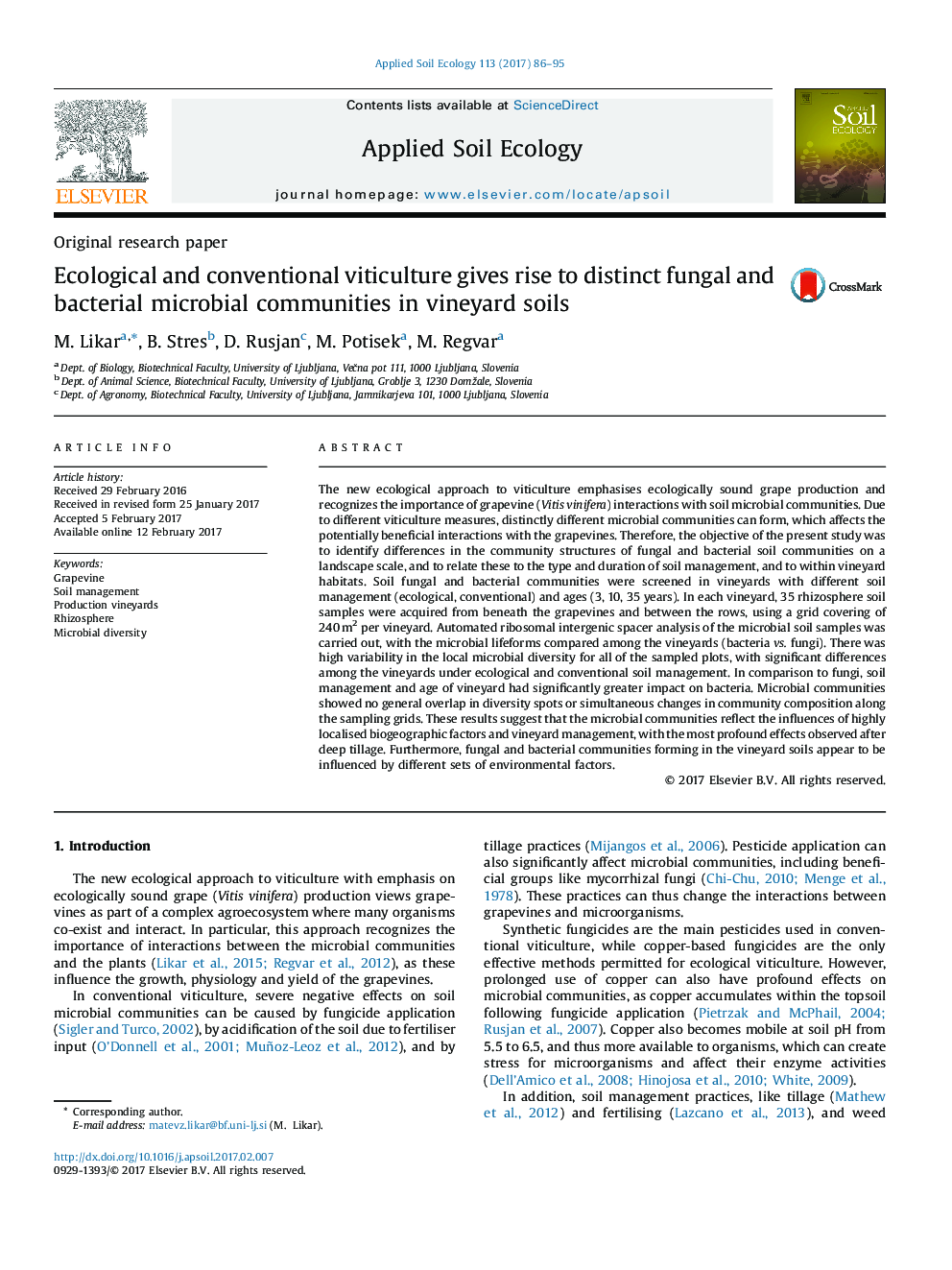| کد مقاله | کد نشریه | سال انتشار | مقاله انگلیسی | نسخه تمام متن |
|---|---|---|---|---|
| 5742739 | 1617770 | 2017 | 10 صفحه PDF | دانلود رایگان |
- Production vineyard microbial soil communities were screened on a landscape scale.
- ARISA analysis was performed for 140 samples collected in a grid-based design.
- Microbial communities were influenced by localised biogeographic factors.
- Agricultural practice and vineyard age have greater impact on bacteria than fungi.
The new ecological approach to viticulture emphasises ecologically sound grape production and recognizes the importance of grapevine (Vitis vinifera) interactions with soil microbial communities. Due to different viticulture measures, distinctly different microbial communities can form, which affects the potentially beneficial interactions with the grapevines. Therefore, the objective of the present study was to identify differences in the community structures of fungal and bacterial soil communities on a landscape scale, and to relate these to the type and duration of soil management, and to within vineyard habitats. Soil fungal and bacterial communities were screened in vineyards with different soil management (ecological, conventional) and ages (3, 10, 35 years). In each vineyard, 35 rhizosphere soil samples were acquired from beneath the grapevines and between the rows, using a grid covering of 240Â m2 per vineyard. Automated ribosomal intergenic spacer analysis of the microbial soil samples was carried out, with the microbial lifeforms compared among the vineyards (bacteria vs. fungi). There was high variability in the local microbial diversity for all of the sampled plots, with significant differences among the vineyards under ecological and conventional soil management. In comparison to fungi, soil management and age of vineyard had significantly greater impact on bacteria. Microbial communities showed no general overlap in diversity spots or simultaneous changes in community composition along the sampling grids. These results suggest that the microbial communities reflect the influences of highly localised biogeographic factors and vineyard management, with the most profound effects observed after deep tillage. Furthermore, fungal and bacterial communities forming in the vineyard soils appear to be influenced by different sets of environmental factors.
Journal: Applied Soil Ecology - Volume 113, May 2017, Pages 86-95
